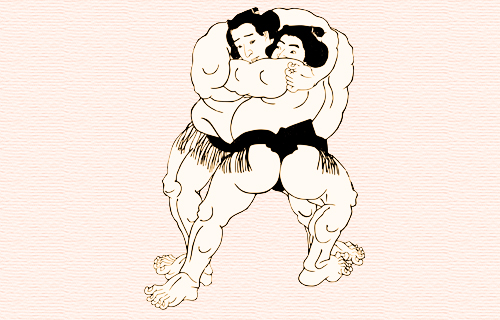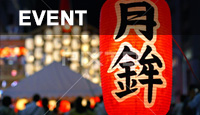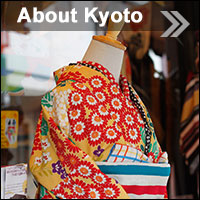Top > JAPAN Collection > Sumo
Sumo
What is Sumo
Sumo wrestling is a martial art of Japan. Sumo wrestler calls as “Rikishi” and their battle is originated Shintoism of Japan. Since the long time ago, Sumo was industrial enterprise and lately it is known as martial art even out side of Japan. Two men (physically and mentally healthy) compete in front of gods and show the respect to gods, so the manner is important for Sumo. They wear only “Mawashi” (sumo wrestler's loincloth) and as Sumo Wrestling part of a national function, historically it is related with imperial court.

Kyoto and Sumo
The beginning of Edo period to get sufficient cash flow to construction and to restoration of the temples and shrines hold Sumo tournament.
The social basement to live as professional Sumo Wrestler was rapidly progressing at that time. And large men were moved and followed the industrial enterprise of the shogunate capital. However seems like there were so many troubles and Shogunate prohibited the enterprise in 1648. In 1680, the interdict was retracted and Sumo was developed until today.
The record of 1699 of Sumo wrestling in Kyoto says some of the visitors who came for Sumo game, were dead. But when the capital was moved and the emperor moved to Tokyo, Major Sumo wrestlers also started to move to Tokyo. There was a chance to show Sumo game by Kyoto Sumo wrestlers to British royal family. More than 30 Sumo wrestlers were crossed the ocean and it was succeeded in London. There were some other chances but by the time Sumo of Kyoto was declined.
In 1912, people wanted to continue and save Kyoto Sumo, and made a Kyoto battle field of Sumo in side of Nijo castle.
It was facing occidental, inside Japanese building for 3500 people was able to watch the game. In 1930’s Sumo of Kyoto was disappeared.


The most famous Events!
Please, look at before your travel and planning
- January
- Fude Hajime [2nd-4th]Kitano-tenmangu
- Kemari Hajime [3rd] Shimogamo shrine
- Toshi-ya [15th] Sanju-sangen-do
- February
- Setsubun [2nd-25th] Mibu temple
- Baika Festival [25th] Kitano-tenmangu
- March
- Nagashi Bina [3rd] Shimogamo Shrine
- April
- Miyayo Odori [1st] Gion-kobu-kaburenjo
- Mibu Kyogen [21st-29th] Mibu temple
- May
- Aoi Festival [1st] Kamigamo shrine, Shimogamo shrine
- June
- Kibune Festival [1st] Kibune shrine
- July
- Gion Festival [7th] on the corner of Shijo st. and Karasuma st.
- August
- Daimonji Gozan Okuribi [16th]
- September
- Seimei shrine Reisai [Autumnal Equinox Day] Seimei shrine
- October
- Mibu Kyogen [include the 2nd Mon., for 3days] Mibu temple
- Era Festival [22nd] Heian Jingu
- November
- hitakisa [8th] Fushimi Inari Taisha
- December
- Joya-no Kane [31st] Kurama temple, etc.



